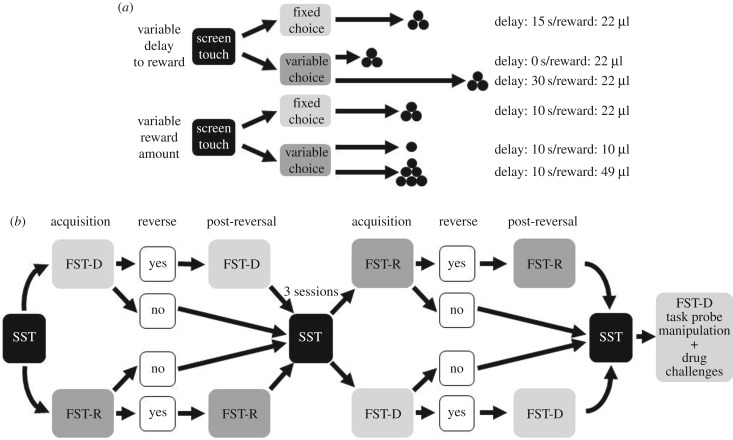Figure 2.
Schematic of the experimental design and procedures. For both the fixed versus variable delay to reward (FST-D) and fixed versus variable reward amount (FST-R) food-scheduling tasks, the subjects were presented with a choice between a fixed option and a variable option, which had two possible outcomes (1 : 1 probability of presentation). The combination of delay durations and reward quantities for each task (a) were determined such that the coefficients of reinforcement were equivalent [36,37]. Mice were initially shaped to respond to the touchscreens with presentation of a single stimulus to the screen (SST), before proceeding through the FST-R and FST-D tasks, with task order counter-balanced between subjects (b). Between the tasks, the mice were given three transition sessions of SST to stabilize behaviour. Performance criteria for reversal: consistent/stable choice performance (>75% choice preference) for more than two sessions, maximum of 20 sessions per phase.

